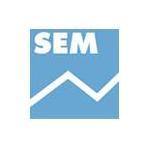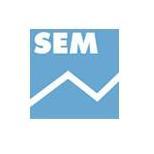 Author: Donald Jowdy, Suncoast Equity
Author: Donald Jowdy, Suncoast Equity
Covestor model: Suncoast Equity
Disclosure: Long ABT, GWW, NKE
This past year was one of measured progress that included strong corporate profits, low US economic growth, marginal improvement in employment, and an uptick in housing starts coupled with less price declines. Financial stress was also present from the Euro-Zone on the brink of collaborative collapse, U.S. debt ceiling crisis, and one of the worst displays in a long, long time of ineffective government.
The equity market swung wildly but ended up in just about the same place it started the year. The Suncoast Equity model (SEM) fared a bit better posting a positive return of 4.3% net of fees versus the S&P 500 of +2.1%, and SEM outperformed most of its peers as represented by the Lipper Core/Growth reporting returns of 0% and -3%, respectively.
Looking forward we see many reasons to stay the course. We continue to emphasize the best opportunities will be in high quality businesses with a global reach and strong balance sheets. Company valuations are attractive based on both an absolute basis and relative to bonds, especially against high quality corporates and Treasuries.
Earnings growth projections for our portfolio in 2012 are in the low double digits, down slightly from the mid teens growth we suspect 2011 will post. But these are still at healthy levels and higher than the mid-single digit profit growth for the companies as a whole in the Standard & Poor’s 500. Anemic portfolio appreciation in 2011, combined with strong earnings growth in 2011 and 2012, may support rising portfolio price appreciation in the year ahead.
We have always felt that our favorable long-term investment results benefit from selection among higher quality businesses, as well as from our intense emphasis on safety. High quality businesses boast business statistics, such as above average return on capital and excess free cash flow. A rather large percentage of publicly traded businesses don’t make the cut and this narrows our focus to approximately 250 companies.
Safety has been a critical factor and will always be as long as we are managing client assets. In today’s world of extreme volatility and a lot of leverage, some companies’ financials may implode, and we don’t want to be invested anywhere near these situations. A company with substantial cash or little to no debt is not going to go bankrupt. So the SEM Disciplined Investment System (SEM-DIS) requires companies to have strong balance sheets.
Within our portfolio it may appear as if we favor some industries, such as consumer goods, but our choices are entirely bottom-up. It just so happens that a disproportionate number of consumer-based companies are very good choices because they boast global brands, recurring sales, good growth prospects and lower risk; the attributes of an attractive business. Nike (NKE) fits this description and we have been owners for nearly five years.
When we review the investment potential of any company in our universe we conclude that there are three ways to succeed, or that we can benefit by: (1) The growth in intrinsic earnings value and an increase in the business valuation; (2) The growth in intrinsic earnings but business valuation remains constant and (3) Flat intrinsic earnings growth but the valuation improves. The first path is the best and is primary in nearly every new portfolio holding.
Our foremost belief is that over time stock price follows earnings growth. Below are the earnings per share progress and average stock price for W.W. Grainger, (GWW), over the last decade, a SEM portfolio holding for nearly six years:
Year Earnings Per Share Stock Price (Avg. Hi/Low)
2000 $1.86 $40.60
2005 $3.68 $62.00
2011e $9.00 $158.77
So what is your first observation other than SEM should have become an investor earlier on? Rising earnings result in higher valuations and good investment returns. Deeper analysis would also reveal that earnings growth at GWW is generated by modest amounts of incremental capital. If you own a business in which the earnings grow, but that is only achieved alongside management continuing to raise capital by selling new shares in the company or borrowing more money, this will not work out well for early or later owners. This is why we seek companies that earn consistently high returns on capital and avoid companies whose returns on capital trends are at low levels or declining.
The next component is business valuation. Oftentimes the stock market is driven in the near to mid-term by fear, greed and other raw emotions, which we have today. This volatility will create a significant gap between a company’s current stock price and its intrinsic value. Since we always seek the opportunity to buy high quality companies at a discount, let us go through an example. We usually focus our attention on detailed valuation yardsticks such as free cash flow yields, but for this example we will stick with the more familiar price-to-earnings ratio (P/E). We look at this from three perspectives by comparing the current P/E ratio to (1) the company’s own history under a similar growth environment, (2) other companies we can own or the market benchmark, and (3) other investments such as fixed income. We will utilize SEM holding Abbott Labs (ABT), which we have owned since 2008, to illustrate this business valuation concept:
Abbott Labs – Earnings Growth, Price to Earnings Ratio
Current Year: 8.2%, 11.1
10-year average: 9.0%, 18.2
S&P 500, current p/e: 6.0%, 12.3
AA 10 Year Corporate Bond Yield: 3.5%, 28.5
From the above table our first focal point is that (ABT) has grown its earnings at an average annual rate of 9% over the last ten years and it is projected to grow earnings at a similar rate of 8.2% in 2012. Over that same ten year time period ABT’s stock has sold at an average P/E ratio of 18.2x, but today it is selling at only 11.1x, a considerable discount to its ten year historical average. ABT is also currently selling at a P/E ratio that is slightly below the market and our analysis concludes that it is an above average company. ABT, with an earnings yield (the reciprocal of its P/E ratio) at 9%, is a much better value than the AA 10 year bond, which pays only 3.5%. So for every $1 we invest today we earn 9 cents on our ABT investment versus 3.5 cents for the AA 10 year. All three measures support ABT as an attractive investment.
Of course, our work is not complete by simply looking at the quantitative side of the equation. We put much work and importance into analyzing the qualitative attributes of the company and its business advantages.
Our remarks last quarter proposed that “change is gonna happen” and evidence keeps building toward that path. Along the journey we can’t help but poke fun at the US government buffoonery. Following on the heels of the debt-ceiling debacle in August, the “Super Committee” got nothing accomplished. We closed the year with the drama of the two-month extension of a payroll-tax break. Should decisions involving a two-month extension be celebrated? News reports revealed that the basis for approval was that the Republicans feared the party would suffer in the 2012 elections if the tax break was not approved. Sounds like a solid business decision to me. These politicians have created a global embarrassment and it goes without saying that leadership is sorely lacking throughout Washington. Of course this can’t continue and at some point we need solid leadership or we have to engage Warren Buffett’s sage advice: ”You just pass a law that says that any time there’s a deficit of more than three percent of GDP, all sitting members of Congress are ineligible for re-election.”
Amidst the folly in governmental leadership and financial stress amid domestic and European sovereign nations, the world is becoming a better place. Bloomberg Businessweek Deputy Editor Romesh Ratnesar summed it up quite nicely: “Since 1981 the proportion of the developing world living in extreme poverty has fallen from 50% to less than 20%…infant mortality is down across the board…the chances of dying in war have never been lower… the 7 billionth person was born into a world that’s richer, healthier and safer than at any time in history.”
As our economy chugs toward recovery, good news slowly surfaces such as recent reports that Americans are filing fewer new claims for jobless benefits than at any time since the recession and new housing starts are kicking up. Our companies grow in the U.S. and in the global economy simply because people living longer consume more.
Our portfolio is attractively priced and equities in general are relatively good values precisely because of the uncertainty throughout various economic landscapes and political charades. When you review history, rarely are the best opportunities connected to cheerful times. The general worries give us the chance to purchase good quality companies at a discount.


